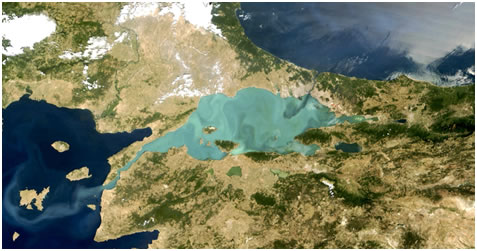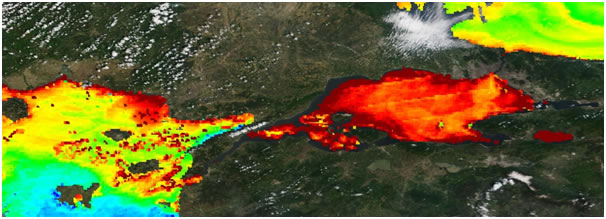Turkish Straits System
The Turkish Straits System (TSS) is a complex dynamical system providing transport of water, mass, heat and materials between the adjacent Aegean and Black Seas. The Marmara Sea allows communication with these seas through the Bosphorus and Dardanelles Straits. The behavior of the TSS is typical of a ‘system’, since its combined response is determined by, but different from, a linear combination of the individual responses of its elements: the Bosphorus and Dardanelles Straits and the Marmara Sea. The dynamics of the TSS is characterized by a nonlinear response. The complex TSS region is influenced by environmental forcing at a wide range of scales, which result in interactions across these scales. These specific characteristics determine the overall functioning of the system through a chain of processes influencing not only the properties of seawater, heat and mass exchanged through the TSS buffer zone, but also the circulation, the transport and mixing of materials in the Marmara Sea and in the adjacent seas, the hydrological cycle and sea level variations across the TSS, finally leading to impacts on ecosystems and climate on regional scale.

Fig. 1.1 Marmara Sea plankton bloom (coccoliths), showing the ‘Bosphorus Jet’ in the Marmara Sea and the ‘Dardanelles Jet’ in the Aegean Sea.

Fig. 1.2 the Bosphorus Jet produces the highest chlorophyll concentrations in the Marmara Sea as a result of plankton blooms.